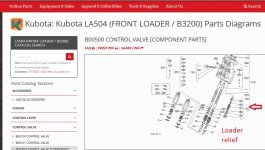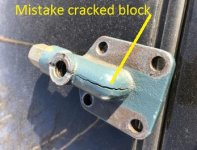Teikas Dad
Gold Member
I finally had a chance to do my system pressure test yesterday. I worked the tractor for an hour or so to make sure everything was warmed up to operating temperature. Disconnected the rearmost hydraulic connector on the FEL and plugged the gauge in there.
Ran it up to 2500 RPM and tested - 4 times - Run it up then to zero, back up, to zero, etc. Factory spec calls for 2090 to 2200 PSI on the system. I consistently got 2050 PSI so I'm low. The gauge kit came with 3 spacers - a .10, .20 and .30mm. The only thing I can't find and I've searched everywhere online and here on the forum is how many PSI each thickness spacer will raise the pressure. I've seen BX info that shows about 30 PSI per .10mm spacer but I can't find anything on a B3200 (or B3300 - same basic tractor). Would the spacers raise the pressure the same amount on a B3200 as on the BX series or is the whole process trial and error?
Also, I found that there was a slight leak on the female connector on the gauge. Nothing squirting out while under pressure, just some weeping - maybe a tablespoon worth of fluid if that with the full test cycle. Would that have any impact on my pressure reading?
Ran it up to 2500 RPM and tested - 4 times - Run it up then to zero, back up, to zero, etc. Factory spec calls for 2090 to 2200 PSI on the system. I consistently got 2050 PSI so I'm low. The gauge kit came with 3 spacers - a .10, .20 and .30mm. The only thing I can't find and I've searched everywhere online and here on the forum is how many PSI each thickness spacer will raise the pressure. I've seen BX info that shows about 30 PSI per .10mm spacer but I can't find anything on a B3200 (or B3300 - same basic tractor). Would the spacers raise the pressure the same amount on a B3200 as on the BX series or is the whole process trial and error?
Also, I found that there was a slight leak on the female connector on the gauge. Nothing squirting out while under pressure, just some weeping - maybe a tablespoon worth of fluid if that with the full test cycle. Would that have any impact on my pressure reading?

